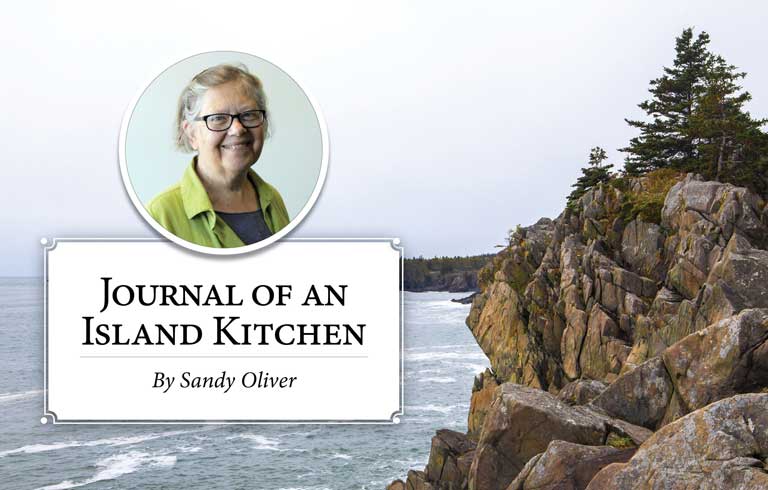A friend observed this week, midst soggy, foggy, drizzle, and downpours, that, “I’m glad I don’t have to depend on the garden for food this year.”
People have planted beans twice, perhaps at last seeing some showing above ground. Radishes and greens, which sprouted to flea beetles’ delight, were left with lacy leaves.
Whatever of my whole first planting of lettuce started inside and set out hopefully, survived an attack of Japanese beetle grubs which chewed away the stem from roots, were then mauled by slugs. Frequent rain showers diluted the effectiveness of the old beer-in-a-dish trap, and the more powerful Sluggo pellets needed too frequent replacement.
One year, I decided to stop buying fresh vegetables in winter. In the summer, I planted plenty of root crops…
Cold and wet hinders planting. Wet soil compacts too much when worked even if it isn’t clayey. What a frustrating growing season so far except for the weeds which plant themselves when and where they choose and so thrive on their own terms.
So far the happiest green growing things here are the tomatoes in my hoop house. Protected from pounding rain, sheltered from chilly nights, about 30-odd paste, slicer, and cherry tomatoes are blooming and setting fruit.
Back in early May when I set them out in their appointed places under wires that support trellising strings, I thought about canning in August and September, about winter soups and sauces, how in a year from that moment, I’d be down to the last few jars of tomatoes; how I was planting meals months to a year in advance.
Last year’s droughty late summer resulted in one good ear of corn per stalk instead of the more usual two, and we ate so much off the cob that enough corn for the usual couple dozen packages of cut kernels stashed in the freezer never materialized. What I did freeze disappeared quickly into early winter’s shepherd’s pies and corn chowder. A corn supply calibrated to last until July was simply impossible.
This week, we snapped off the sprouts that always appear, starting in March, among October-stored potatoes, and we still have a five-gallon bucket and a half of another bucket of useable potatoes for mashing and roasting, and summer potato salads.
In September and October, we’ll harvest the next year’s supply. I think it is fun to have one salad made up of a couple of last year’s potatoes and a couple of the new year’s potatoes.
Of course, this is just vegetables. We eat grains grown in Maine, elsewhere on our continent, and even around the globe; fruit from this region, elsewhere across the country, and even the globe, and as much meat grown in nearby Maine as we can find, New England cheese, and luxury European cheeses, so we are not subject merely to Maine’s flukey weather.
We certainly are subject to flukey weather elsewhere. I wonder how the intense heat wave in the South and West concurrent with our cool and damp will affect this year’s meals. Still, as long as we have money and the supply chains work, we will eat.
I often think about people in past times, and in our own, who have to choose between eating and saving seed crops; who have to ration their food to make sure there will be enough; who don’t raise any of their own food and must depend on market supplies completely out of their control.
I think about 1816, often called Eighteen Hundred and Froze to Death, which saw extremes of heat and cold, and in New England, frost in every month and heavy snow in early June. Most crops failed, and lack of feed for cattle meant animals were slaughtered because it was impossible to overwinter them.
While lots of people simply went hungry, others ate a repetitive diet, probably grateful to eat anything. With nothing to rely on from the 1816 season, the winter and spring of 1817 must have been dire.
One year, I decided to stop buying fresh vegetables in winter. In the summer, I planted plenty of root crops: beets, carrots, onions, potatoes, rutabagas, parsnips. I stashed away red and green cabbage, winter squashes of all sorts, and made pickles out of cucumbers, green beans, and cauliflower. I froze green beans, peas, corn, and some peppers. I gathered apples, canned peaches.
Winter salads that year were cole slaw, Waldorf salads, grated carrots with and without, apple chunks, shredded butternut squash, cold beet salad; pickles replaced raw cucumber, and sometimes we ate pickles instead of green salad. It boiled down to “fresh” equals “uncooked.”
It took planning several months ahead. There was no noticeable diminution in the quality of my life. After all, humankind had been living this way for millennia.
Sandy Oliver is a food historian who gardens, cooks, and writes on Islesboro. She may be contacted at SandyOliver47@gmail.com.





